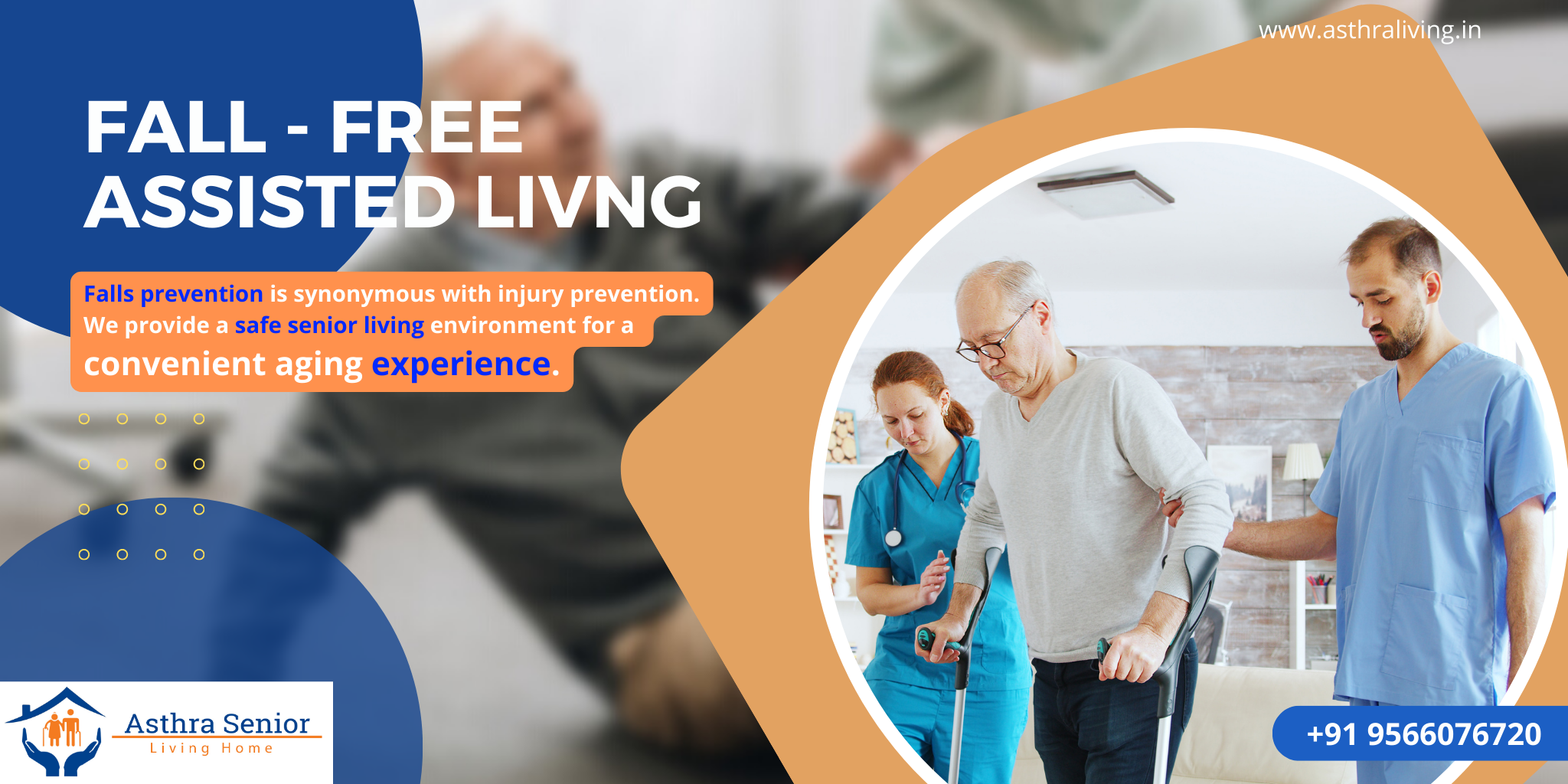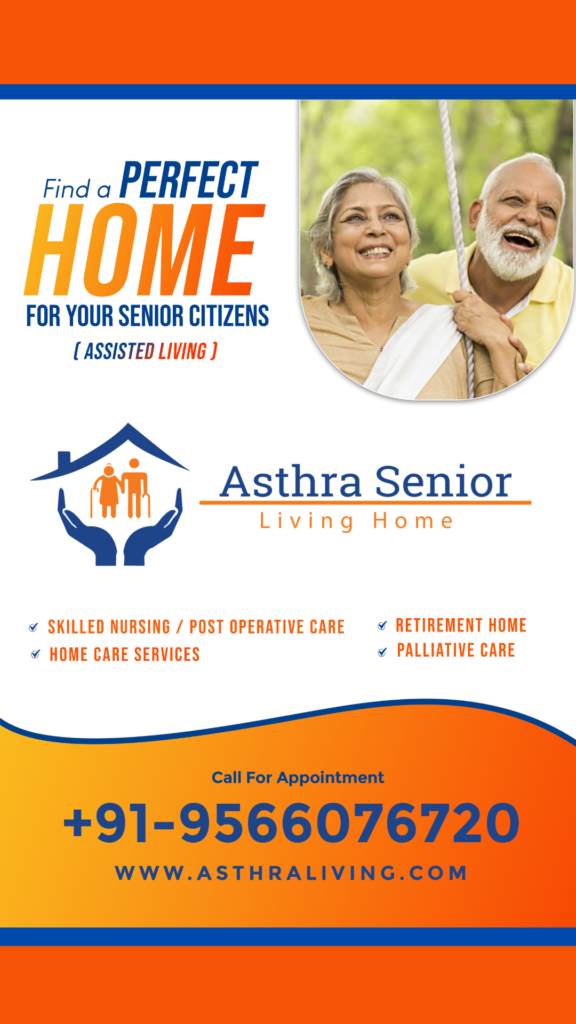Fall Prevention in Elderly: Tips to Reduce the Risky falls
‘Falls are part of aging,’ is a widely held fallacy that endangers the lives of the elderly. Fall Prevention in elderly is more common than in other age groups, but they are not a normal component of aging. They arise most of the time because of the features of a normal home.
Falls are the major cause of mortality in those over the age of 65. Falls in Elderly will always have a serious impact on them. If they do not cause death, they will undoubtedly induce injuries that impair general well-being.
Statistics on senior falls show some strange things. Every year, one in every three elders dies from a fall, and two-thirds of those who have fallen do so again within six months. With the rising frequency of falls in elderly, avoiding geriatric falls should be a top focus. Every year, we designate September 22nd as Fall Prevention Day to recognize this goal.
What Can Be Done to Avoid Falls?
Falls are accidents, and we may avoid virtually all accidents by utilizing the proper equipment and creating the atmosphere. The safety of elders begins at home. The elderly who live in nursing homes must be fall-proof. It can be partially reconstructed, but simple alterations can considerably lower the likelihood of a fall.
Elderly care specialists recommend the following adjustments for a fall-free aging experience. Read the blog to learn ways to keep the elderly from falling.
Statistics and Facts About Senior Falls
Fall Prevention in elderly should be a priority in your life since statistics on falls in elderly, show how prevalent these accidents are. Every year, millions of individuals aged 65 and up die. Every year, more than one in every four elderly people falls. This jeopardizes both the health and independence of the elderly. A potentially fatal fall might also cause significant financial pressure.
The major Causes of Elderly Falls
Many circumstances can contribute to a fall. The following are the top causes of falls in elderly:
- Medication side effects
- Environmental hazards in the house
- Vision impairment
- Coordination and balance are impaired.
- Parkinson’s disease, rheumatoid arthritis, osteoporosis, and peripheral neuropathy are examples of chronic diseases.
While the prospect of a fall may be terrifying, all is not lost! There are several proactive steps you may take to lower your chances of slipping and falling. We’ll go through our top fall safety advice below.
Fall Prevention Tips
Health Security
The health of your body is important for fall prevention in elderly. Take charge of your health by taking the following precautions:
- Make an appointment with your doctor for a fall risk assessment.
- Inquire with your doctor whether your drugs might cause dizziness, drowsiness, blurred vision, or confusion.
- Make an appointment for a regular eye checkup. In aging eyes, less light reaches the retina, making contrasting edges, tripping hazards, and obstructions more difficult to see.
- Keep a healthy weight.
- Maintain a consistent sleep pattern and get adequate quality sleep.
- Make physical fitness a priority. Regular exercise strengthens and tones your muscles. It also aids in the flexibility of your joints, ligaments, and tendons.
- Avoid consuming alcohol. Combining alcohol and medicine can be harmful.
- Arrange for a hearing test. Even slight hearing loss triples the chance of an unintentional fall.
To assist reduce falls and other related health risks, it is critical to address hearing loss and get hearing aids as soon as workable.
Mobility Security
Are you able to travel to your house safely? Examine your house and implement the following measures to protect yourself and your surroundings:
- No-slip tape should apply to the tile and hardwood flooring.
- Check that any wall-to-wall carpeting is secure.
- Take out any throw rugs or area rugs.
- Keep extension cables out of the way of foot traffic.
- Remove any extraneous floor debris.
- For further help and balance, use a cane or walker.
- Change your laced shoes with Velcro sneakers.
- Put on shoes with nonslip soles. Avoid walking about with bare feet, socks, or slippers.
- Replace your current living room chair with a recliner with the power-lift assist.
- Keep the staircases clear.
- Ensure that all steps have sturdy railings on both sides.
- Consider getting a stairlift installed.
Overall Security
- Maintain a phone contact list of emergency contacts.
- Make a strategy for how and who to call for help.
- To make a clean walking route, remove any superfluous furniture.
- Install a nightlight in each room.
- To avoid the need for a step stool, move kitchen goods to lower cabinets.
- Keep a lamp and a light switch beside the bed.
- In case of a power outage, have flashlights in each room.
Bathroom Security
For elderly people, the restroom may be a dangerous area. Wet, slick flooring combined with hard surfaces can lead to unpleasant falls. Protect yourself with the following bathroom upgrades:
- Install grab bars on the wall in the bathtub, shower, next to the toilet, and in most common places.
- Include a bathtub or shower chair.
- Use a hand-held shower nozzle instead of a regular shower head.
- Install nonslip shower and bathtub mats.
- Install a walk-in tub with convenient access.
- Consider installing a raised toilet seat or a toilet safety structure with handlebars.
- Make certain that the restroom is well-lit. Keep a nightlight plugged in at all times.
- Keep toilet paper, tissues, and personal care supplies in an easily accessible location.
What Should You Do If a Senior Falls?
What to Do If You Slip and Fall
Even with all the precautions in place, a fall can still occur. This may be a frightening experience, so knowing how to get back up securely is critical. As a guide, follow the instructions below:
- Try to maintain your cool. Inhale slowly and deeply through your nose, then exhale through your mouth.
- survey your injuries.
- Do not move if you have a major injury, such as bleeding, a fractured bone, or head damage. call for help or use your phone’s emergency.
- If you haven’t sustained a serious injury and can stand, search for the nearest piece of substantial furniture, such as a chair.
- Roll slowly onto your side and get on your hands and knees from there.
- Crawl or pull yourself to the piece of furniture you’ve identified. You’ll use this as leverage to lift yourself.
- Kneel and place both hands firmly on the piece of furniture.
- Using your arms to stabilize yourself, push up with your legs and slowly pivot to sit on the chair.
- If you felt dizzy at any moment, stay on the floor and call for help.
- No matter how little the fall is, always notify your loved ones and your doctor. Falling once increases your chances of falling again.
Advice for Caregivers and Family Members
If you fall and someone else discovers you before you can get up, they must know how to manage the situation and assist you to get up safely. Pass on the following advice to your carers, friends, or family members:
- Remain calm and reassuring to your loved one. Instruct them to take deep, steady breaths.
- Look for any injuries. Inquire whether they are in pain and where the discomfort is located.
- If there are major injuries, contact emergency and instruct your loved one not to move. Stay at their side and keep them calm until first responders come.
- If there are no major injuries and the individual wants to rise, they should do so gently and cautiously. Your loved one must be able to raise themself; do not lift them yourself. Instead, walk them through the process and give help and support as required. If they cannot stand on their own, seek help.
- Assist the individual in rolling over and getting their hands and necessities. If they have knee discomfort, you can throw a towel or blanket on the floor.
- Place a chair in front of the individual’s head. Instruct them to go into a kneeling position by placing both hands on the chair. Then instruct them to bend forward, bring one leg forward, and rest one foot flat on the ground to form a kneeling lunge.
- Take another chair and position it behind the individual. Instruct them to lift themselves and sit back on the chair behind them, using both their arms and legs.
- Request that your loved one sits in the chair until you both feel they are ready to rise without falling again.
- Notify their doctor of the fall as soon as possible and check for injuries or new discomfort regularly.
Asthra Fall Free Care
Here, Asthra Senior Living Homes provides prominent fall-free Assisted Living Services to senior citizens with slip-resistant floors, high low beds, handrails, and grab-rails in the most common places, livingroom, Bathroom areas post great threat for elderly falls and 24/7 Nursing Care to assist in their daily life like bathing, taking medications & food, walking, engaging recreational and social activities. While the health and safety of seniors are reported frequently to their respective persons. Falls prevention is synonymous with injury prevention. We provide a safe senior living environment for a convenient aging experience.


